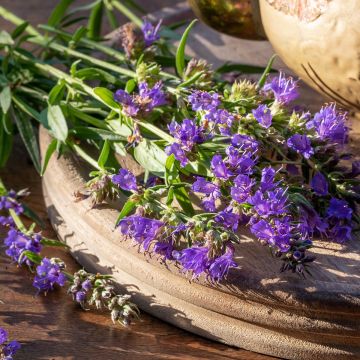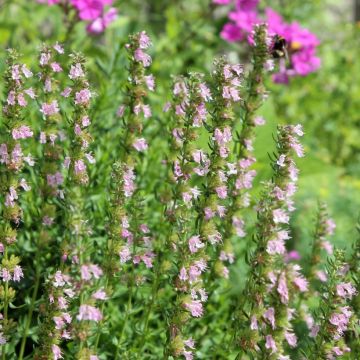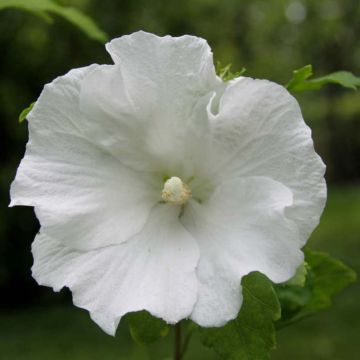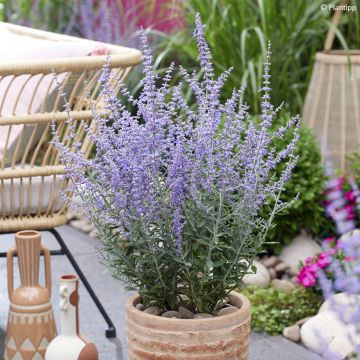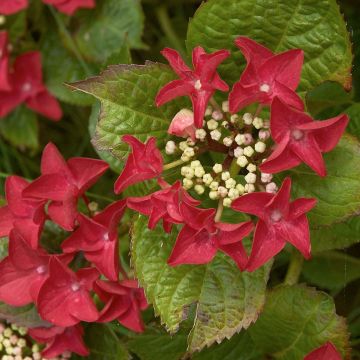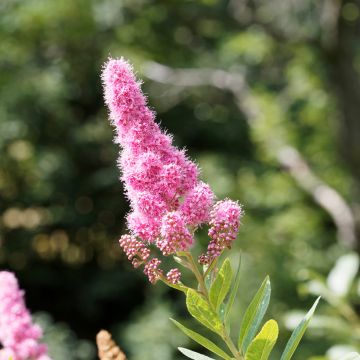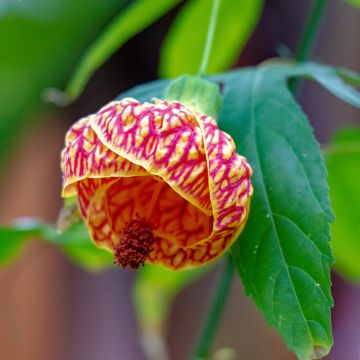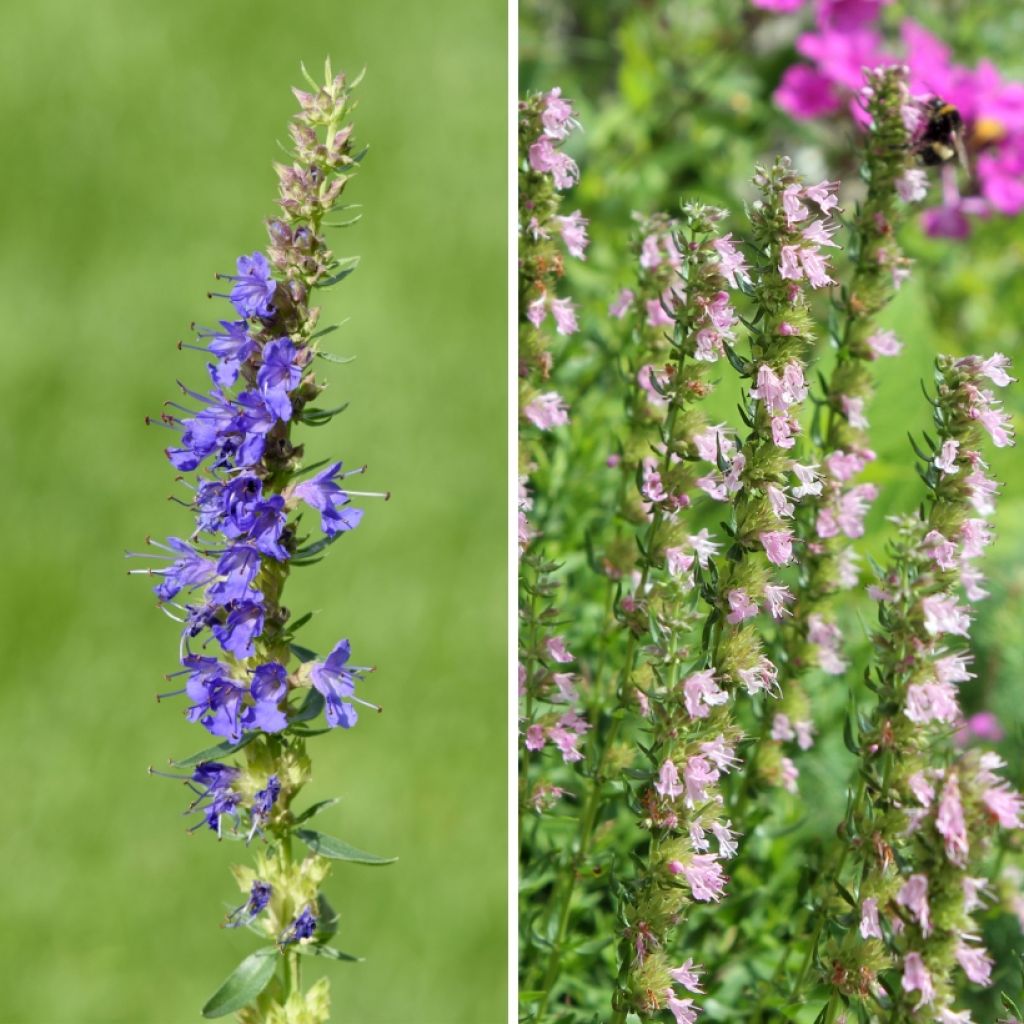

Blue and Pink Hyssop
Blue and Pink Hyssop
Hyssopus officinalis sp., Roseus
Hyssop
Beautiful plant starting to grow
marie-Madeleine, 29/04/2025
Special offer!
Receive a €20 voucher for any order over €90 (excluding delivery costs, credit notes, and plastic-free options)!
1- Add your favorite plants to your cart.
2- Once you have reached €90, confirm your order (you can even choose the delivery date!).
3- As soon as your order is shipped, you will receive an email containing your voucher code, valid for 3 months (90 days).
Your voucher is unique and can only be used once, for any order with a minimum value of €20, excluding delivery costs.
Can be combined with other current offers, non-divisible and non-refundable.
Home or relay delivery (depending on size and destination)
Schedule delivery date,
and select date in basket
This plant carries a 24 months recovery warranty
More information
We guarantee the quality of our plants for a full growing cycle, and will replace at our expense any plant that fails to recover under normal climatic and planting conditions.
Would this plant suit my garden?
Set up your Plantfit profile →
Description
This is a pair of Blue and Pink Hyssops, to flower a rock or garrigue style garden. These two varieties have semi-evergreen, highly aromatic foliage, which is believed to have many medicinal properties. Forming well-balanced small bushes, measuring 45 cm in all directions, they flower from June to September. This decorative flowering attracts a large number of insects and butterflies. To enjoy them, you can also grow them in a large container, making sure to let the substrate dry between waterings.
The duo consists of:
1 Hyssopus officinalis: this is the typical species, with lavender-blue flowers, the "Sacred Herb" of Greek civilizations.
1 Hyssopus officinalis Roseus: this slightly shorter form produces pink flowers.
This duo of hyssops will find its place in herb gardens next to common sage or winter savory. These small shrubs thrive in well-drained, dry, poor, and limestone soils, as long as the exposure remains very sunny. Plant 4 plants per square metre, alternating the two varieties.
You can also plant this duo in a large rock garden with rockroses, oreganos, thymes, and low-growing cistus (Cistus x skanbergii, 'Grayswood Pink'), taking into account their ultimate size. In dry slopes, associate these hyssops with compact lavenders like 'Munstead' and creeping rosemarys such as 'Pointe du Raz'. Hyssop tolerates pruning well, it can be shaped into a ball, and it can even be used along a vegetable garden path or to edge squares of culinary plants.
Harvest fresh hyssop leaves as needed, and the flowers at the beginning of flowering. To preserve, cut the leaf stems before flowering and dry them. Use them to flavour salads, vegetables, soups, and liqueurs. Hyssop is also used in infusion (20g of leaves per litre of boiling water with a little cinnamon and honey) for the bronchi, digestion, and the nervous system.
Report an error about the product description
Plant habit
Flowering
Foliage
Botanical data
Hyssopus
officinalis
sp., Roseus
Lamiaceae
Hyssop
Mediterranean
Other Hyssopus
View all →Planting and care
This pair of Hyssopus officinalis can be planted in any well-drained soil, in full sun. Hyssop is sensitive to heavy, compact, and moist soils. While this plant can adapt to the driest and poorest environments, it is never as beautiful as in a light, but fertile soil. Limestone is not a problem. Excessive winter moisture can greatly harm its hardiness. In cool and humid climates, it is preferable to add a lot of gravel or coarse sand to the planting soil, and to install it in a large hole from which the clayey soil has been removed. Annual pruning is essential, after flowering, to keep the plant compact and bushy, and to promote flowering the following year.
Planting period
Intended location
Care
-
, onOrder confirmed
Reply from on Promesse de fleurs
Similar products
Haven't found what you were looking for?
Hardiness is the lowest winter temperature a plant can endure without suffering serious damage or even dying. However, hardiness is affected by location (a sheltered area, such as a patio), protection (winter cover) and soil type (hardiness is improved by well-drained soil).

Photo Sharing Terms & Conditions
In order to encourage gardeners to interact and share their experiences, Promesse de fleurs offers various media enabling content to be uploaded onto its Site - in particular via the ‘Photo sharing’ module.
The User agrees to refrain from:
- Posting any content that is illegal, prejudicial, insulting, racist, inciteful to hatred, revisionist, contrary to public decency, that infringes on privacy or on the privacy rights of third parties, in particular the publicity rights of persons and goods, intellectual property rights, or the right to privacy.
- Submitting content on behalf of a third party;
- Impersonate the identity of a third party and/or publish any personal information about a third party;
In general, the User undertakes to refrain from any unethical behaviour.
All Content (in particular text, comments, files, images, photos, videos, creative works, etc.), which may be subject to property or intellectual property rights, image or other private rights, shall remain the property of the User, subject to the limited rights granted by the terms of the licence granted by Promesse de fleurs as stated below. Users are at liberty to publish or not to publish such Content on the Site, notably via the ‘Photo Sharing’ facility, and accept that this Content shall be made public and freely accessible, notably on the Internet.
Users further acknowledge, undertake to have ,and guarantee that they hold all necessary rights and permissions to publish such material on the Site, in particular with regard to the legislation in force pertaining to any privacy, property, intellectual property, image, or contractual rights, or rights of any other nature. By publishing such Content on the Site, Users acknowledge accepting full liability as publishers of the Content within the meaning of the law, and grant Promesse de fleurs, free of charge, an inclusive, worldwide licence for the said Content for the entire duration of its publication, including all reproduction, representation, up/downloading, displaying, performing, transmission, and storage rights.
Users also grant permission for their name to be linked to the Content and accept that this link may not always be made available.
By engaging in posting material, Users consent to their Content becoming automatically accessible on the Internet, in particular on other sites and/or blogs and/or web pages of the Promesse de fleurs site, including in particular social pages and the Promesse de fleurs catalogue.
Users may secure the removal of entrusted content free of charge by issuing a simple request via our contact form.
The flowering period indicated on our website applies to countries and regions located in USDA zone 8 (France, the United Kingdom, Ireland, the Netherlands, etc.)
It will vary according to where you live:
- In zones 9 to 10 (Italy, Spain, Greece, etc.), flowering will occur about 2 to 4 weeks earlier.
- In zones 6 to 7 (Germany, Poland, Slovenia, and lower mountainous regions), flowering will be delayed by 2 to 3 weeks.
- In zone 5 (Central Europe, Scandinavia), blooming will be delayed by 3 to 5 weeks.
In temperate climates, pruning of spring-flowering shrubs (forsythia, spireas, etc.) should be done just after flowering.
Pruning of summer-flowering shrubs (Indian Lilac, Perovskia, etc.) can be done in winter or spring.
In cold regions as well as with frost-sensitive plants, avoid pruning too early when severe frosts may still occur.
The planting period indicated on our website applies to countries and regions located in USDA zone 8 (France, United Kingdom, Ireland, Netherlands).
It will vary according to where you live:
- In Mediterranean zones (Marseille, Madrid, Milan, etc.), autumn and winter are the best planting periods.
- In continental zones (Strasbourg, Munich, Vienna, etc.), delay planting by 2 to 3 weeks in spring and bring it forward by 2 to 4 weeks in autumn.
- In mountainous regions (the Alps, Pyrenees, Carpathians, etc.), it is best to plant in late spring (May-June) or late summer (August-September).
The harvesting period indicated on our website applies to countries and regions in USDA zone 8 (France, England, Ireland, the Netherlands).
In colder areas (Scandinavia, Poland, Austria...) fruit and vegetable harvests are likely to be delayed by 3-4 weeks.
In warmer areas (Italy, Spain, Greece, etc.), harvesting will probably take place earlier, depending on weather conditions.
The sowing periods indicated on our website apply to countries and regions within USDA Zone 8 (France, UK, Ireland, Netherlands).
In colder areas (Scandinavia, Poland, Austria...), delay any outdoor sowing by 3-4 weeks, or sow under glass.
In warmer climes (Italy, Spain, Greece, etc.), bring outdoor sowing forward by a few weeks.






























